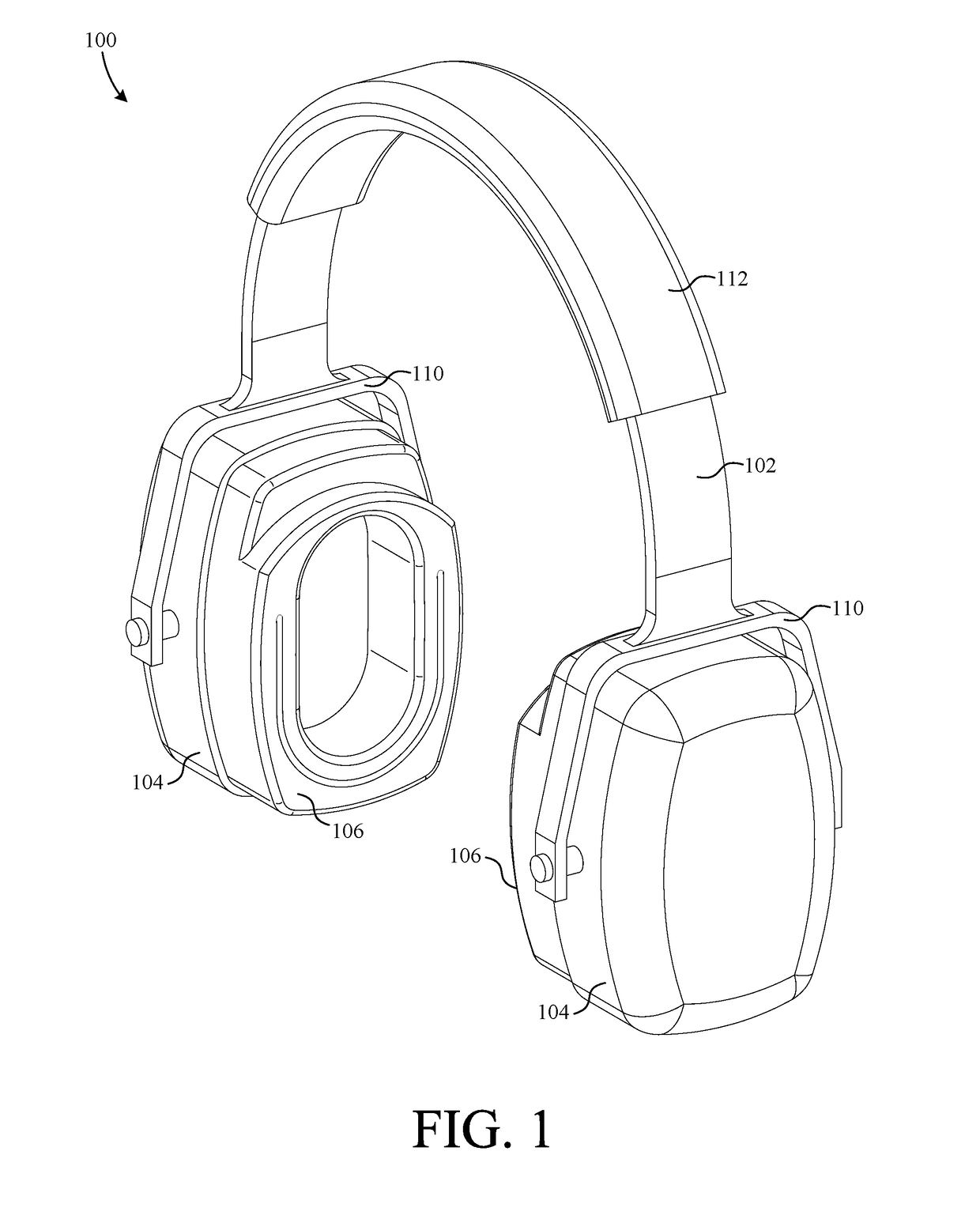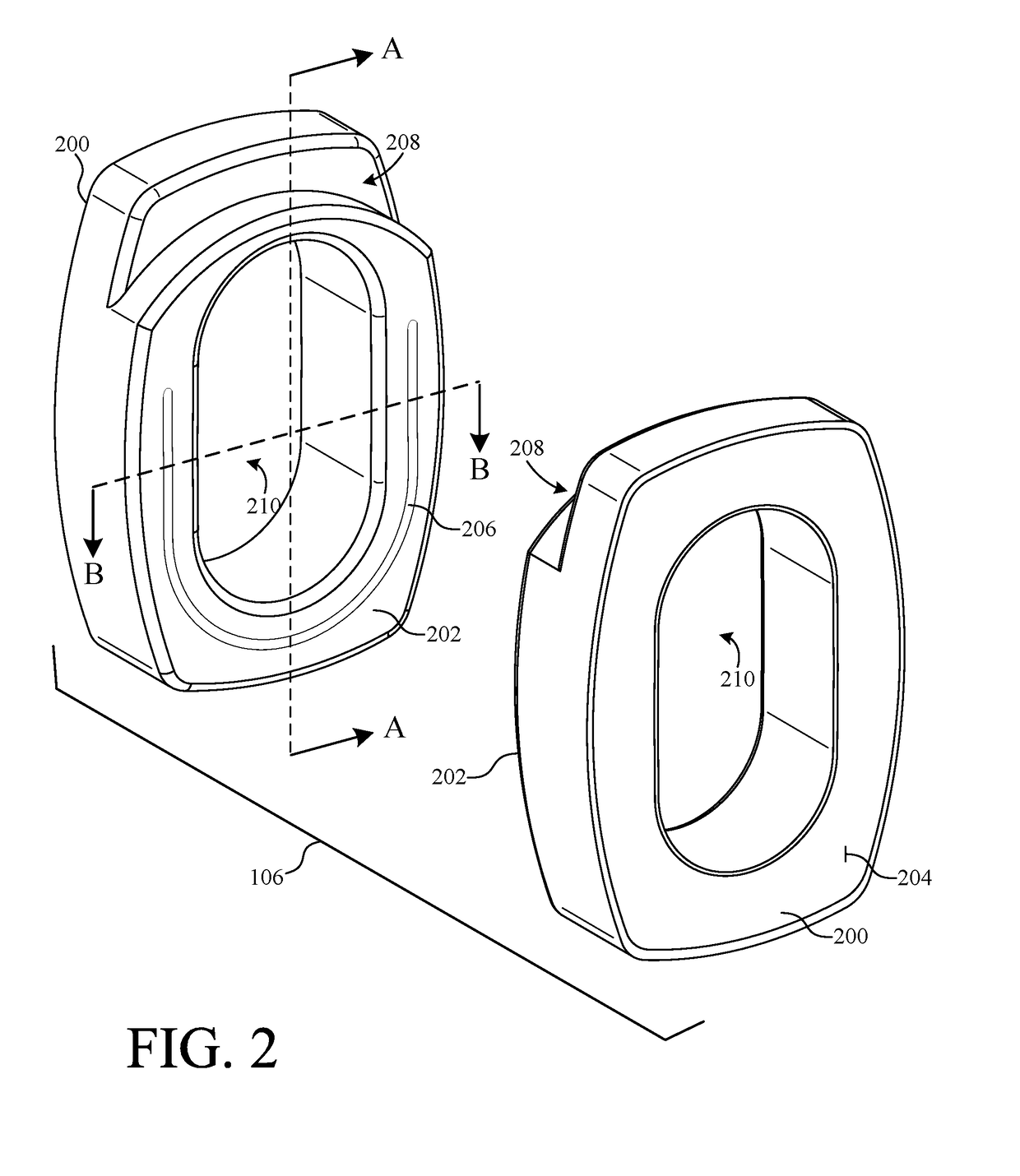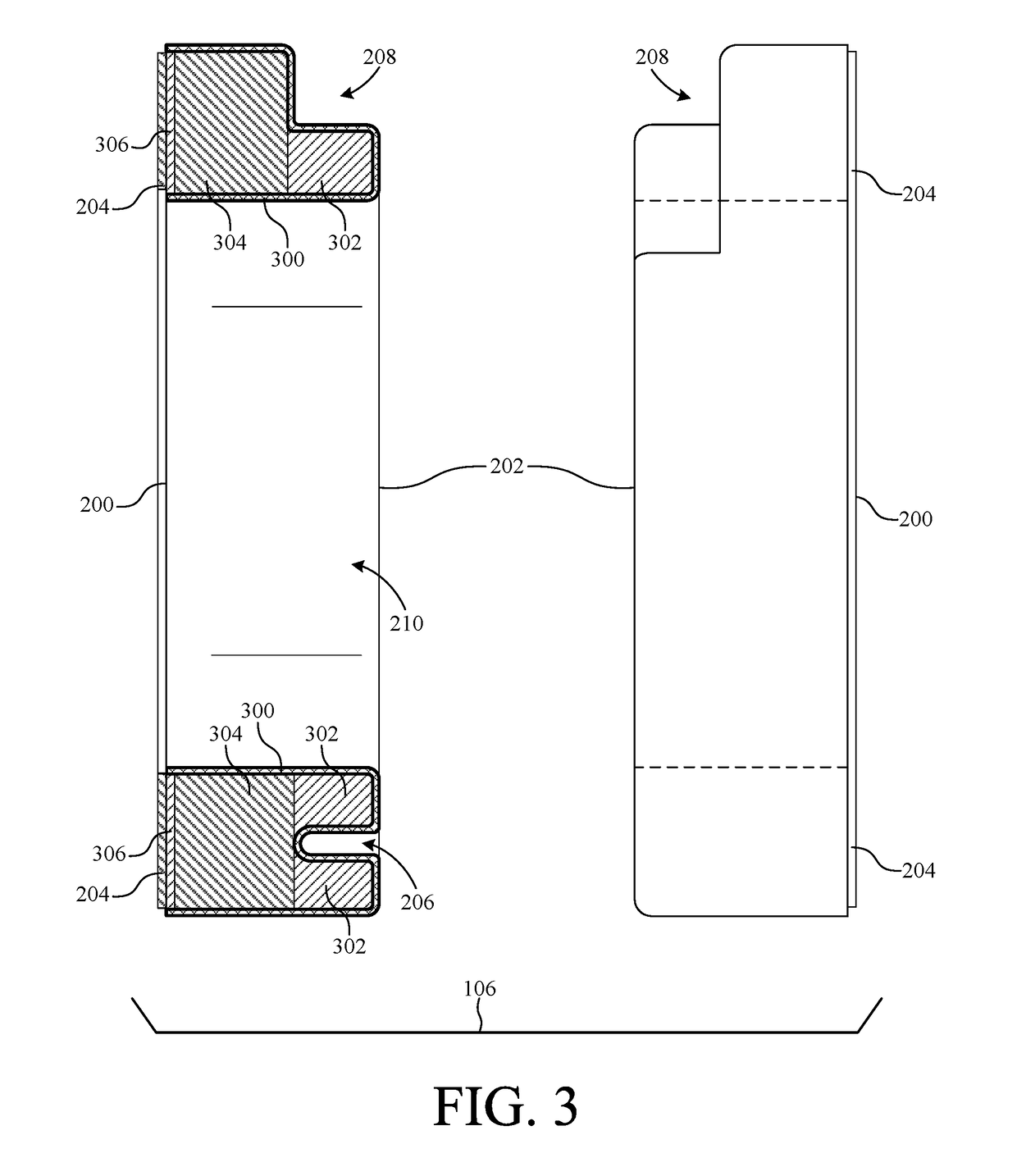Accommodating ear pads
a technology for ear pads and ear pads, which is applied in the field of ear pads, can solve the problems of degrading the sound attenuation function of ear pads, ear pads are also uncomfortable for users wearing eyewear, and degrading the ear pads, so as to facilitate the proper positioning of such articles
- Summary
- Abstract
- Description
- Claims
- Application Information
AI Technical Summary
Benefits of technology
Problems solved by technology
Method used
Image
Examples
Embodiment Construction
[0028]The present invention overcomes the problems associated with the prior art, by providing ear pads configured to receive portions of articles (e.g., the arms of eyewear, band of a hat, etc.) worn or carried by a user. In the following description, numerous specific details are set forth (e.g., material types, fastening means, size, etc.) in order to provide a thorough understanding of the invention. Those skilled in the art will recognize, however, that the invention may be practiced apart from these specific details. In other instances, details of well-known manufacturing practices (e.g., molding, assembling, adhering, etc.) and components have been omitted, so as not to unnecessarily obscure the present invention.
[0029]In the description that follows, anatomical terms are used to describe positional relationships between features of the headsets / ear pads. The terms are used with the understanding that a headset and attached ear pads are being worn on the head of a user in a n...
PUM
 Login to View More
Login to View More Abstract
Description
Claims
Application Information
 Login to View More
Login to View More - R&D
- Intellectual Property
- Life Sciences
- Materials
- Tech Scout
- Unparalleled Data Quality
- Higher Quality Content
- 60% Fewer Hallucinations
Browse by: Latest US Patents, China's latest patents, Technical Efficacy Thesaurus, Application Domain, Technology Topic, Popular Technical Reports.
© 2025 PatSnap. All rights reserved.Legal|Privacy policy|Modern Slavery Act Transparency Statement|Sitemap|About US| Contact US: help@patsnap.com



